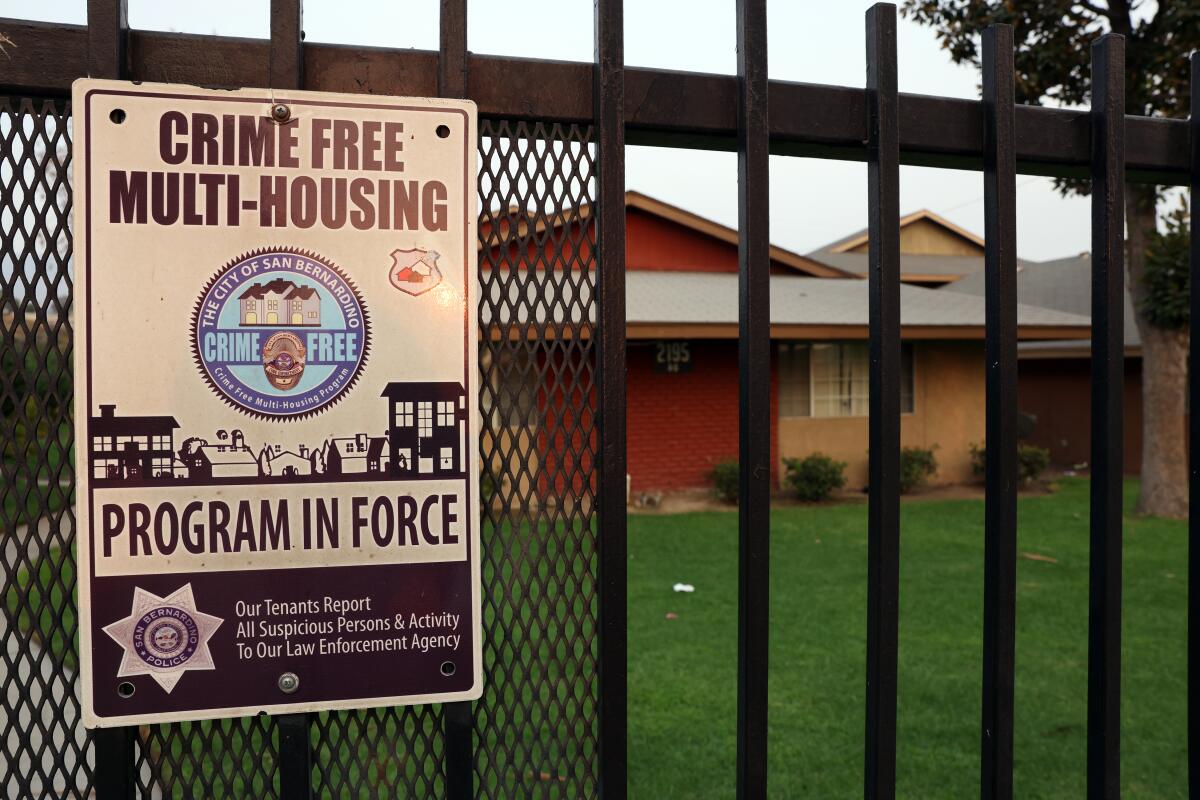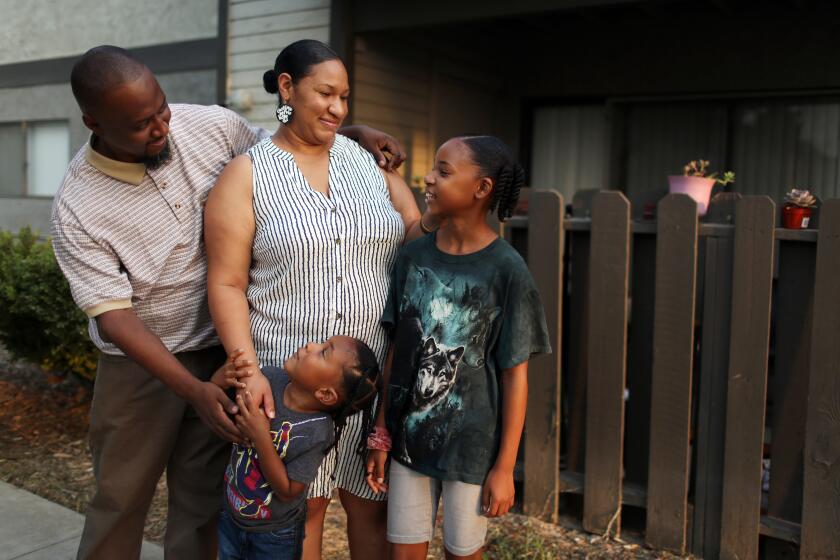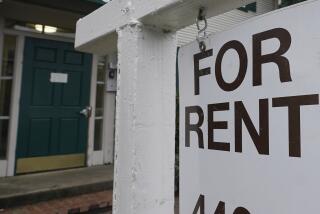Here’s how we found places in California with rules about ‘crime-free housing’

To understand the spread of crime-free housing policies in California, The Times searched the municipal codes of all 539 cities and counties in the state and scoured local police department websites.
Most California local government municipal codes are published on third-party websites, including municode.com, codebook.com and qcode.us, and The Times used a variety of search terms to identify potential crime-free housing laws. For municipal codes that weren’t available on those sites, The Times examined each city’s individually. Similarly, The Times used a variety of search terms to identify which local police departments are advertising crime-free housing trainings for landlords.
Nearly 2,000 communities in the U.S. and elsewhere encourage landlords to evict or exclude tenants who have had some interaction with law enforcement.
The Times defined crime-free housing polices as those that encourage landlords to evict or exclude tenants who have had some level of interaction with law enforcement. To build its list, The Times incorporated research from the nonprofit groups the National Housing Law Project, Lawyers’ Committee for Civil Rights Under Law and American Civil Liberties Union of Southern California. The Times also consulted with Kathryn Ramsey, an assistant professor at the University of Memphis School of Law who has written about crime-free housing programs, to finalize the tally.
To measure the relationship between crime-free policies and shifting demographics, The Times analyzed data from the National Historical Geographic Information System and the U.S. Census Bureau to track population changes from 1990 to 2018. The review found that most California cities with the largest increases of Black and Latino residents during that time had approved the restrictive housing rules.
The Times also obtained five years of eviction data from the California Unlawful Detainer Pilot Program, which allows city attorneys in Long Beach, Los Angeles, Oakland and Sacramento to initiate evictions after drug or weapons arrests. The Times then compared the data with demographics of the renter population in each city. Outside research on the demographics of those targeted for eviction and enforcement under additional crime-free housing programs in Oakland and Los Angeles supplemented The Times’ reporting.
More to Read
Sign up for Essential California
The most important California stories and recommendations in your inbox every morning.
You may occasionally receive promotional content from the Los Angeles Times.










